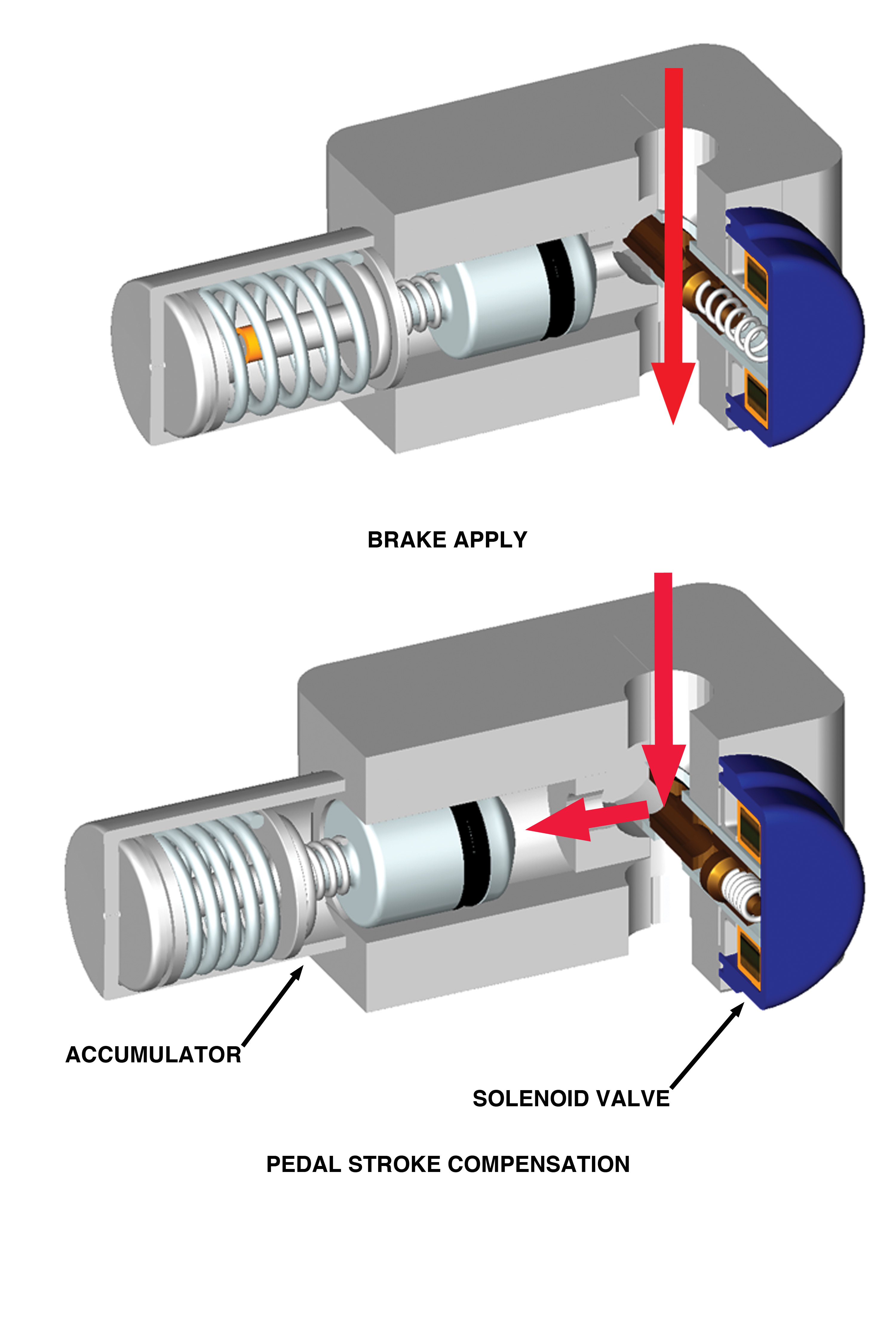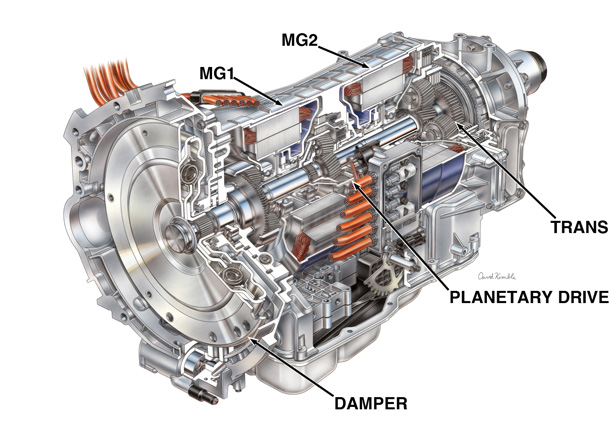
Today, there are two classifications and two acronyms: Battery Electric Vehicle (BEV) and Hybrid Electric Vehicle (HEV). The Society of Automotive Engineers (SAE) defines a HEV as a vehicle with two power sources — electricity and the internal combustion engine.
Charging the Batteries
There are two variations of the hybrid electric vehicle theme. The first and most common is the conventional hybrid that uses an internal combustion engine as the source for charging the batteries.
The second type of hybrid, and next logical step, are hybrids that not only turn fuel from the tank to charging power, but are also able to plug into the power grid for a charge.
The hybrid uses electrons like a cumbustion camber burns hydrocarbons. But, like most gas pumps the energy can come in many forms like gasoline and diesel. For electrified vehicles, it comes in Alternating Current (AC) and Direct Current (DC). The real advancement is in how the hybrid converts and manages the two types of current.
Most hybrids on the roads use a high voltage AC motor/generator and internal combustion engine to drive the vehicle. The engine also drives a second motor generator and inverter to supply Direct Current (DC) to the battery pack. The DC from the battery is converted back into three-phase AC by the inverter diode bridge to drive the motor/generator.
For a plug-in HEV, a separate single-phase inverter can be used to convert AC from the power grid to DC to charge the batteries. Some of these charges are mounted in the home.
BEV and EREV
A BEV and Extended Range Electric Vehicle (EREV), like the Volt, will use only the power grid to charge the batteries. A BEV and EREV will use a three-phase inverter to drive the high voltage motor and a separate single-phase inverter to charge the batteries. The EREV uses an onboard generator driven by the gas engine to supply three-phase high voltage AC to the motor.
Drive Systems
Powersplit
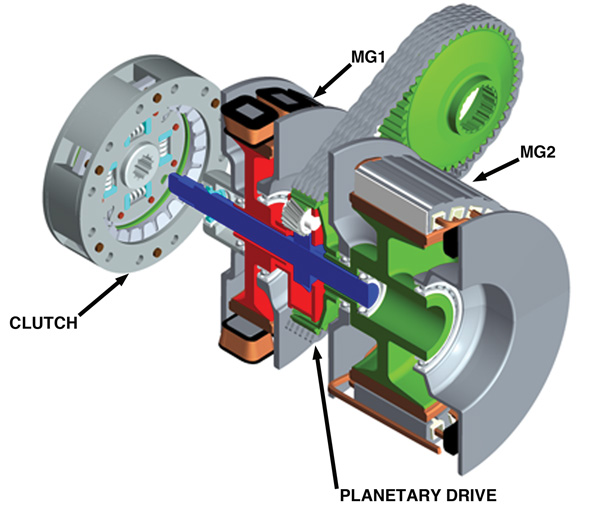
The Toyota Prius Hybrid Synergy Drive, Chevrolet Silverado 2 mode and Ford Fusion hybrid are Powersplit drive systems. The system is made up of a high voltage battery pack, a motor/generator (MG1 in the illustrations) that has a primary function of charging the battery pack.
A planetary gear set transmits the power from a motor/generator (MG2 in the illustrations) to the drive wheels. The sun gear of the planetary gear set is connected to the engine, planetary gears to MG1 and the ring gear to MG2. The powersplit system has two modes of operation:
1. Electric Vehicle mode uses MG2 only to drive the vehicle at low speeds; and
2. The Prius ICE has a clutch that is used as a damper for continuous engagement to the planetary gear set.
The engine, MG2 and MG1 are engaged to drive the vehicle and charge the batteries during normal operation. The Prius Synergy Hybrid Drive system programming controls the ICE, MG1 and MG2 to maintain vehicle speed and battery pack state of charge. The Silverado 2 mode drive has a high voltage battery pack, an MG1, MG2 and planetary gear set in the same manner as the Prius, plus a four-speed transmission with reverse.
Parallel
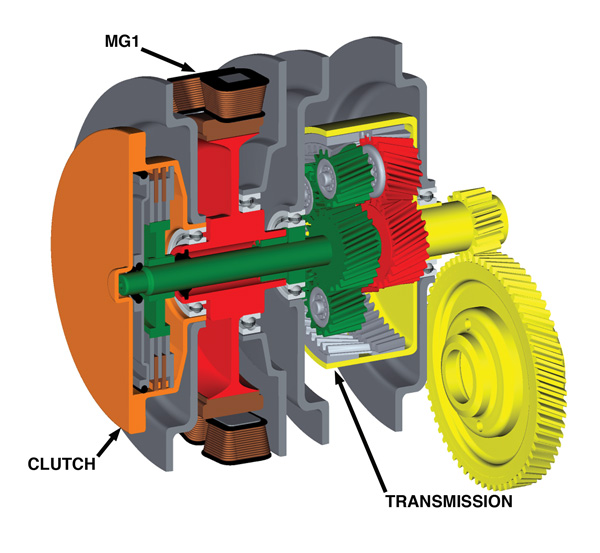
The parallel system does not use the planetary gear set. The motor /generator MG1 is directly connected to the engine and transmission by a clutch or torque converter. The motor/generator can be switched to drive the vehicle or charge the high voltage batteries. This system is used in the Honda Insight.
EREV
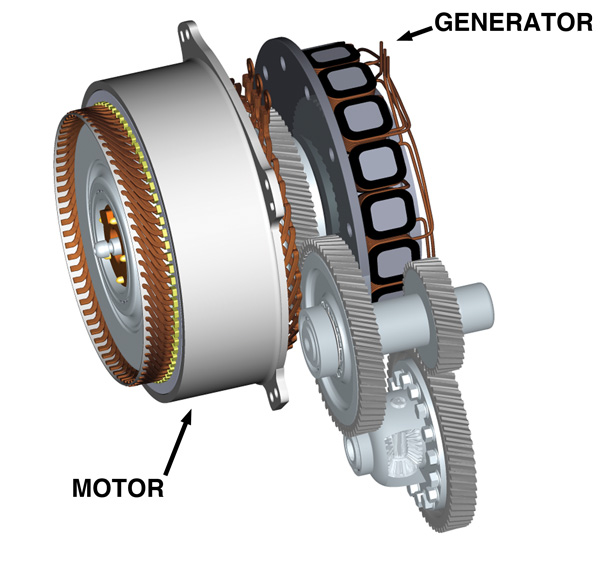
Technically speaking, the Volt EREV system is not a hybrid. The internal combustion engine connected to the generator is used as a power source for the high voltage AC motor. The generator and battery pack are connected electrically in parallel to the AC motor. The motor has regenerative braking capability to charge the high voltage battery pack.
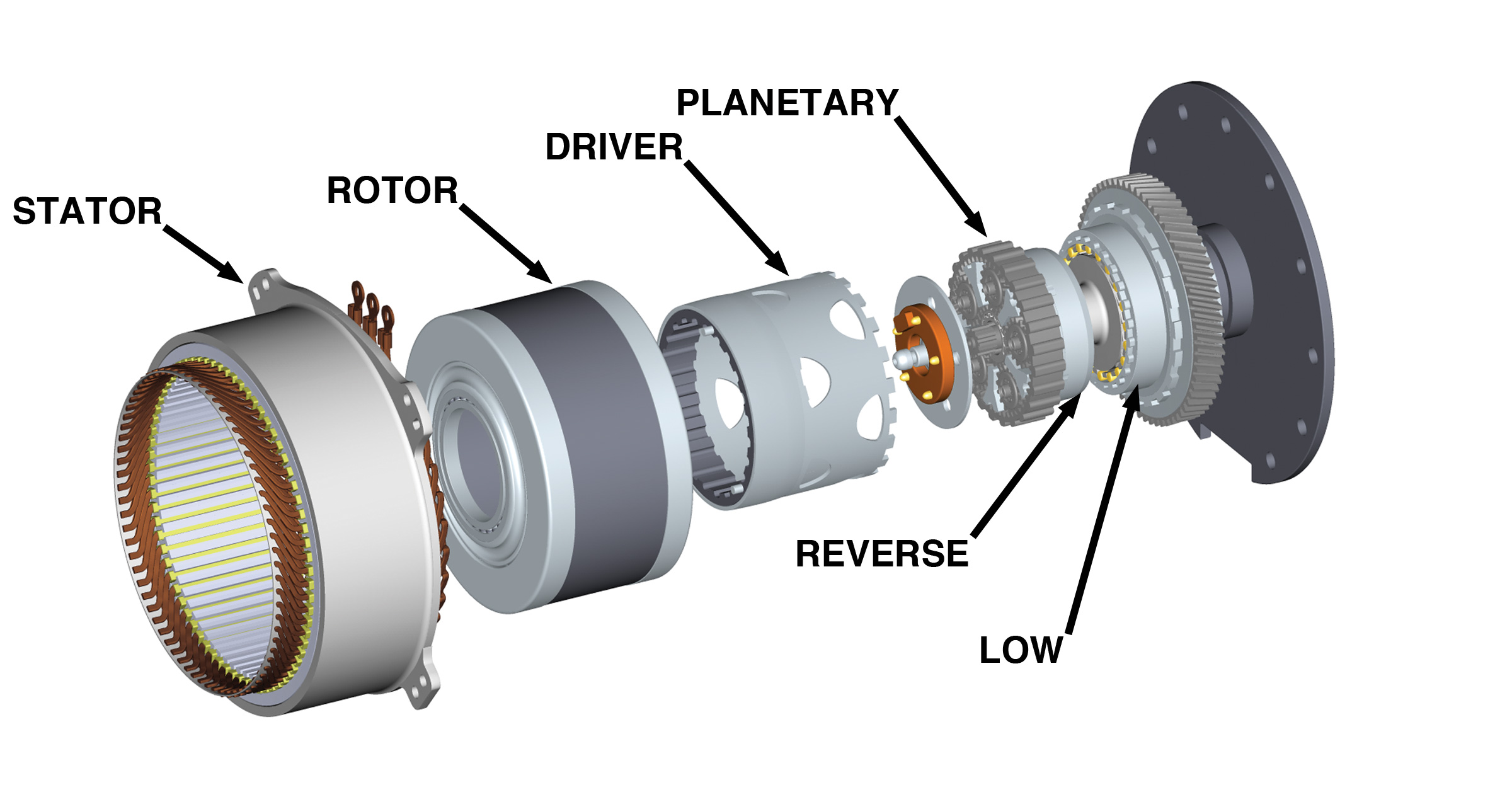
The engine, generator and AC motor operate independently in the same manner as a modern diesel AC electric locomotive. This is the drive system used by the Chevrolet Volt 4TE50 4 mode drive system. NOTE: The AC motor also contains a two-speed transmission with reverse.
Hybrid Drive Braking
In order to understand the operation of a conventional hydraulic braking system and its relation to regenerative braking, refer to the operation of hybrid electric drive systems in the previous section for how they convert mechanical energy into electrical energy.
Deceleration and Regenerative Braking
Vehicle Deceleration
A driver will experience three modes of deceleration in a conventional vehicle with a vacuum booster brake and ABS.
1. Coast down mode is when the driver lifts off the accelerator pedal and the rolling resistance of the tires to the road surface, engine braking and gravity slow the vehicle.
2. Braking mode is mechanical with hydraulic force applied to the calipers.
3. In ABS mode, the hydraulic force is controlled to limit the mechanical force applied to the rotors.
Regenerative Braking
Regenerative braking uses the inertial energy of the vehicle to charge the high voltage battery pack by switching the motor to a generator and converting mechanical energy to electrical energy. Every regenerative stop is an ABS stop. The ABS is used to isolate the master cylinder and reduce the hydraulic force to the calipers. The charge rate of regenerative braking is dependent on the deceleration mode of the vehicle. In coast down mode, the regenerative rate is constrained to allow for rolling resistance to simulate the engine braking against cylinder compression. In braking mode, the hydraulic application is restricted to the drive wheels and motor. MG2 becomes a generator and braking is done by the conversion of mechanical energy to electrical energy. In ABS mode, both regenerative and hydraulic braking can be applied. Unless it is altered, the brake pedal will respond in the same manner as an ABS stop.
Pedal Feel and Braking
Stroke Simulator
To simulate the operation of a vacuum booster hydraulic brake application, the Toyota Prius uses a stroke simulator and brake actuator for normal and ABS operation. The stroke simulator is a solenoid-activated valve that diverts hydraulic pressure from the master cylinder to an accumulator. It is located between the master cylinder and the brake actuator. It uses two coil springs to simulate a normal pedal stroke under normal braking. The brake actuator houses the pump, accumulator, relief valve and pressure sensor to apply hydraulic pressure to the calipers in a regenerative stop. To control the pressure, there are two master cylinder valves, four pressure apply valves, four pressure release valves, two master cylinder pressure sensors and four wheel cylinder pressure sensors.
Brake Pedal Stroke Sensor
The brake pedal stroke sensor works in conjunction with the stroke simulator and provides input to the skid control ECU that controls the stroke simulator. The brake pedal stroke sensor is a non-contact rotary sensor with a two-axis Hall sensor element. A normal controlled stop signal from the brake pedal stroke sensor would activate the stroke simulator to allow maximum regenerative braking. A panic stop signal from the brake pedal stroke sensor would apply a full ABS application. A problem with of brake pedal stroke sensor can affect the operation of the stroke simulator. Verifying the operation of the stroke simulator can eliminate it as the source of the problem.
Service Note
Pad replacement on a hybrid vehicle is the same as a conventional ABS-equipped vehicle. Caliper pistons can be reset in their bores and not set a trouble code with the vehicle shut down. This can be a concern for vehicles equipped with a transponder keyless push button start system — the Toyota Smart Key. If the transponder is within range of the vehicle, the ABS and other systems may be active. With the ABS system activated, resetting the caliper pistons in their bores could set an ABS code. To make sure the transponder is out of range of the vehicle, press the “Start Button.”
Prius Smart Key: The disable switch for the Smart Key is located on the bottom of the instrument panel to the left of the steering wheel. Pressing the button will disable the Smart Key. When disabled, the button is extended. Pressing the button again will latch in and enable the Smart Key system. Check the owners manual for the exact location.
When installing a brake pedal stroke sensor, a new sensor lever is locked in the “0” stroke position by a small pin. Do not detach the pin until the installation has been completed, then firmly press the brake pedal once to break off the pin. Remove the broken pin from the sensor lever.
If a brake job includes an alignment, Toyota service bulletin T-SB0020-08 recommends that the 12-volt battery be disconnected and a zero point calibration be performed. You will also be required to reset all of the accessory’s memory positions that the 12-volt battery powers. This bulletin covers all Toyota vehicles with vehicle stability control.
If the 2nd generation Prius parking brake warning light remains “ON” with the brake released, service bulletin BR002-07 provides the information to correct the condition.
The 2 mode Silverado master cylinder contains a travel sensor and the hydraulic control unit contains a stroke simulator that operates in the same manner as the Prius. The Ford Escape master cylinder contains a stroke simulator and pedal force sensor.
System Integration
Government mandates for vehicle skid and rollover safety systems has brought about the integration of the Anti-Lock Brake System (ABS) and Electronic Throttle Control (ETC). This integration requires the input of sensors and software programming. The sensor input is shared by the controllers that operate the ABS and ETC. The wheel speed sensors, brake pedal position/force sensor, hydraulic pressure sensors and throttle position sensor are sensors that can be directly involved in the operation of the regenerative braking operation.
A scan tool and service information are key to “fixing it right the first time” and remain the best ingredients for success.





